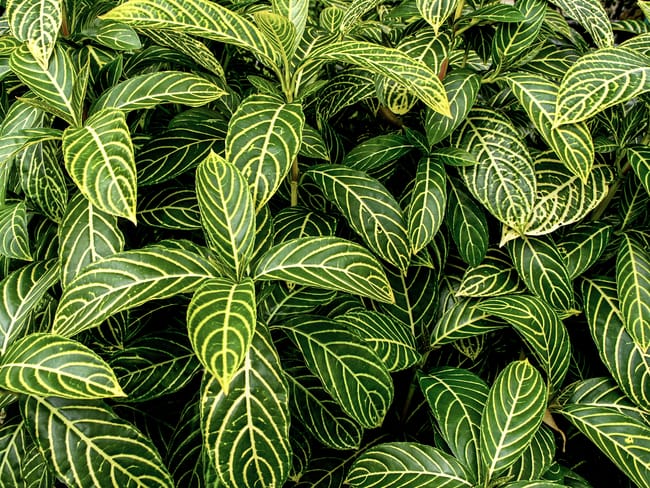

The intense afternoon light will burn their leaves and can seriously damage the plant.

#Variegata zebra plant care full#
Keep them out of the full sun which comes through south and west-facing windows. In your home, you can easily meet the Variegated Alocasia light requirements of between 10,000 to 20,000 lux.Īlocasia macrorrhiza Variegata light needs can be accommodated by placing them near a north or east-facing window with morning sun exposure. In the tropical rainforests of the South Pacific, Variegated Alocasia plants grow in the shade of trees. Variegated Alocasia plant care involves providing it with growing conditions close to those of the rainforests in which it originates.įor the best Alocasia macrorrhiza Variegata care, grow this giant plant in bright but indirect light with warm temperatures and high humidity.

However, growing Variegated Alocasia will add a tropical air in your home and is worth the extra effort. It can also grow to a huge size of up to 15 feet tall and 6 feet across, so make sure you’ve got the room for it to spread.īecause these plants are toxic to humans and animals, you should take precautions in households with children and pets. Its massive leaves, variegated in shades of green and white, have led to it being given the common name of Elephant Ear. Variegated Alocasia plant is native to the tropical rainforests of the South Pacific. Weekly, water if the top half of the soil is dryĪ balanced feed twice a month in spring and summer This huge plant is also low-maintenance as an extra bonus. The massive leaves of Alocasia macrorrhiza Variegata are splashed with shades ranging from dark green to pure white, creating an irresistible focal point wherever it is used. Best practice is always to keep houseplants out of reach of small children and pets.Variegated Alocasia, commonly known as Elephant Ear, is an absolutely spectacular plant for your indoor garden. This plant is pet-friendly and is not toxic to cats or dogs. SYMPTOM: Washed out coloring or brown blotches on leavesĬAUSE: Overwatered Are Prayer Plants Toxic? It’s best not to let it go below 60☏ (15☌). Normal room humidity is fine, but it prefers more humidity if possible. Try using filtered water or leaving water out overnight before using. Marantas can be sensitive to hard tap water. Expect to water more often in brighter light and less often in lower light. Water every 1–2 weeks, allowing the soil to dry out half way down between waterings. Thrives in medium to bright indirect light. leuconeura ‘Tricolor.’ Many species of Maranta produce rosmarinic acid, one of the active components of rosemary that give it the characteristic rosemary scent. Some of the most popular prayer plants in cultivation are Maranta leuconeura or M. In reality, both are considered to be ‘prayer plants.’ The name comes from the tendency of plants in this family to droop, or ‘pray’ at night. ‘ Prayer plant’ is a colloquial term that refers to members of genus Maranta, to which genus Calathea is closely-related. Maranta is the type-genus of Marantaceae, and is named in honor of Bartolomeo Maranta, an Italian physician and botanist of the 16th century who organized his knowledge of botanical pharmacology by nomenclature, species identification and medicinal properties.


 0 kommentar(er)
0 kommentar(er)
